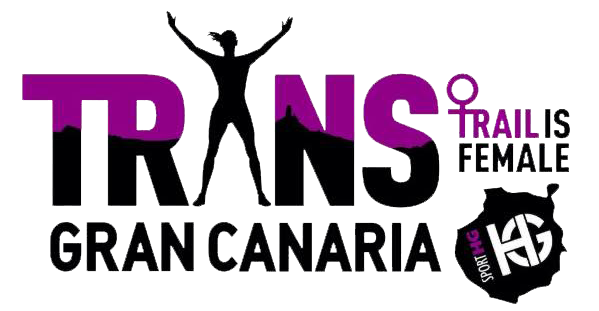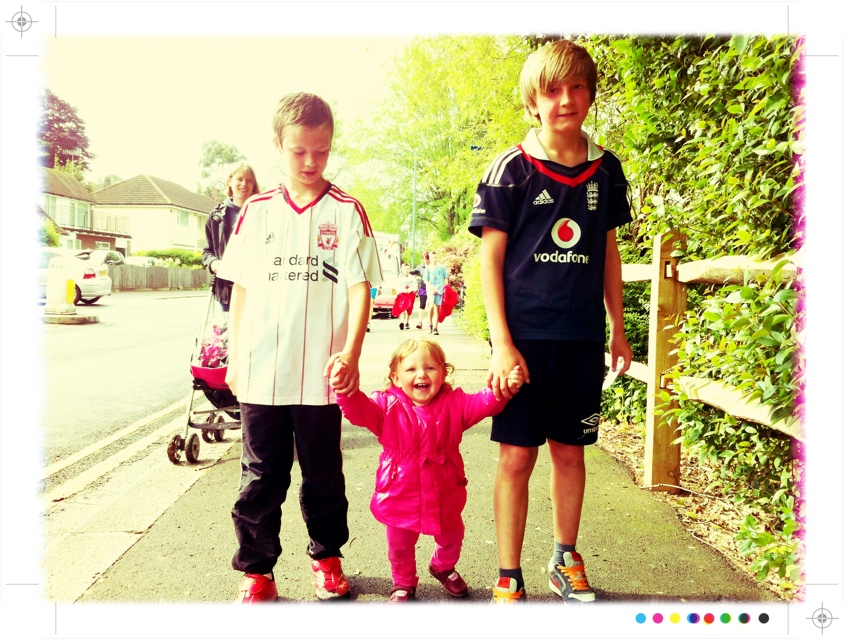I swear they looked at every kilometre of the Transgrancanaria 128km Classic and asked themselves how they could piss off the runners even more at each point in the race.
My running buddy Richard and I have run some pretty tough mountain ultras in our time. Transvulcania three times, Tenerife Bluetrail and CCC in Chamonix stick out as particular highlights, along with my DNF at TDS last year. We know a little bit about this ultra running, skyracing malarkey.

It’s safe to say the Transgrancanaria Classic is right up there as one of the killer mountain ultras in the world. It is part of the Ultra World Tour and is well attended by the elite running community.
2019 UTMB Champion, Pau Capell has won this race for the last two years and was there towing the line again. Also running was Harry Jones from the UK who finished 15th at UTMB last year and Dylan Bowman from the USA. Kaci Licteg and Kathryn Gerbin were in the women’s race along with Azara Garcia from Spain.

In recognition of International Women’s Day, this year the race adopted a mini rebrand of its logo with a woman featured in the image and a new tag line, Trail is Female. They also made sure the elite women started at the front of the race, normally dominated by the elite men. An acknowledgment that we need to increase the ratio of men to women taking part in ultra races.
Richard and I didn’t actually see any of this because we were a good few metres back in the Zone 2 starting pen. As usual, we had conned our wives into believing that this would be a great family holiday and so both families arrived in Gran Canaria for a week of sun, with the added bonus of a stupid hard ultra run thrown in for the dads. We had booked a hotel very near the finish line in the south of the island at Maspalomas.
On the night of the race we caught an official bus to the start, which left at 8pm from outside the expo, where we had collected our numbers. The expo was not spectacular at all when we were there, although it may have been busier and more exciting the day after.
The bus took us all the way from the south to the start line in the north at Las Palmas. It’s around an hour’s journey and they are always nervy affairs. People trying to catch some sleep. Not much talking, anxious faces. It’s a pensive time.
We did get chatting with Toby from the UK who is relatively new to ultra running. I was surprised he had chosen this race so early in his ultra career. The three of us went to Starbucks on our arrival in Las Palmas to while away an hour. I have recently taken to drinking Oat milk lattes.
Before long though, we joined the masses gathered on the beach. Some 800 runners were going to attempt this and only just over 50% would succeed. There are a number of races to enter during Transgrancanaria week. The longest is the TGC 360 which is 268km . There’s also the 65km Advanced race, a Marathon and the Starter 30km race and even a 17km run. But the 128km Classic is the stellar event.

Many of these big races start with rock music blaring out of the speakers. Transvulcania in particular is very good at this ramping up the intensity at the start. In contrast, we had a Male voice choir at the start of TGC! It was good though and we still had the familiar voices of Eoin Flynn and Depa building up the excitement until the start at 11pm.
Richard and I set off together but he was away from me before we even got off the beach. The first 500 metres or so is on the sand and then it’s up on to the promenade for the next 3k. The elite guys are pushing this out at 3:50 per kilometre. That’s my 5k pace! I set off at a rather more sedate speed.
The first few kilometres is taken up with exiting the urban sprawl that is Las Palmas. Our new friend Toby came past me early on during one of the first climbs. I was sticking to my plan. Having looked at the cut offs and the elevation, I decided to start out at 24 hour pace.

There’s an app called LiveRun which I used to set up the required splits to get me to a 24 hour finish. At each checkpoint I would look at it to make sure I was hitting the times. This worked really well for the first half of the race.
During the night section there’s obviously not much of a view to look at, so it’s just a case of getting to the next aid station. For the first half of the race each checkpoint is around 12km apart and I had between two and two and a half hours to get to them, depending on the severity of the climbing and the technical nature of the terrain.
Early on there’s a pretty grim dry river bed which is stony and difficult to run on. Other than that, underfoot the first 50km is relatively easy running. The weather was colder than I had expected and I kept my waterproof on for the whole night section.

It didn’t rain but there was drizzle and a cold wind for much of the night. I was finding that I was just about hitting my splits without over exerting myself. That was about to change though.
Daylight arrived as I was descending into and then climbing out of a spectacular valley. I was loving it. But Richard was over an hour ahead of me by now and Toby was over 30 minutes ahead. Still I stuck to my plan.

Eventually it was time to take my head torch and jacket off and don my sunglasses. There wasn’t a cloud in the sky and it was going to be a scorcher off a day. As we climbed higher, the trail became more beautiful. We were running through forests with sunlight glinting through the trees and views out over the mountains and valleys to the sea.
But it was getting hot and the climbs were getting steeper and more technical. There’s a big difference between climbing or descending a mountain where the ground underfoot is flat and smooth and ground which is strewn with loose stones, tree roots, sharp volcanic rock and uneven steps. It slows you down enormously.

If you are elite or just very confident, you might be able to fly down these descents but for people like me, I don’t want to risk not finishing the race through a stupid injury, or worse still seriously injuring myself and having to pay for an air ambulance to lift me off the side of a mountain. I took it very easy on those sections!
By the time I reached the half way aid station at 64km, it was really hot. I was definitely starting to suffer a little. But I had caught a few other runners who were suffering more than I was, including our friend Toby. Some of the checkpoints were inside in halls whilst others were under makeshift gazebos. One in particular I recall had a live rock band playing!
I also remember making it to the top of another climb to find a group of musicians playing and chanting as we went by. I was beginning to slow. My 24 hour splits were becoming harder to hit and I was burning up. It was also difficult to find food I was happy to eat. Once it got hot I pretty much stopped eating.

At around 80km I began the last major climb of the race, a 900 metre ascent to Roque Nublo. This is the rocky pinnacle featured on all the promotional videos and literature about Transgrancanaria. It’s an absolute bugger to get to. You can see it towering above you for hours as you slowly negotiate the switchbacks.
I had stopped at the bottom at a village cafe to buy a can of Lemon Schweppes which was a total relief! Roque Nublo is a major tourist site so I then bought another can just after reaching the top at a mobile cafe in the car park! There is a mandatory checkpoint at the very top where you have your race number scanned to ensure you have actually been up there.

I had a bit of banter with Richard and my wife via text from the top. Richard was still about an hour or two ahead of me as I started the final section to the highest point of the island at Pico de Nieves. It did reach a point where I was wondering when we would start to descend. The route just kept going up for ages after I thought it should be going down!
Eventually a descent of sorts began, but it was short lived. For the next few hours, until dark, the race route stayed quite high. We would descend a little and then run for ages on the flat. It’s was still technical, just not up or down. I found it very frustrating because I was now desperate to get down off the mountain to feel like I was making headway towards the finish.

Then with around 35km left my watch died. Having told me it had 30 hours of battery at the start, it ended up dying at 18 hours. Fortunately I had planned for this scenario, having experienced this before at Tenerife Bluetrail the previous year. Unfortunately I had not counted on the battery pack I had brought with me failing! After 5 minutes of faffing on the trail, watching 10-20 runners whom I had previously overtaken, fly past me down the hill, I started Strava on my phone and set off again.
By now I was way behind my 24 hour schedule hoping I could make it to the finish in about 26 hours. The head torch came on for the second time and lit up the trail. In that moment I became fully aware of all the dust in the air that I was breathing in, kicked up by runners ahead of me. I also couldn’t shake the feeling that I wanted to get off the mountain. Why aren’t we going down?!!
Eventually I saw a trail of head torches heading down the side of the mountain at an incredibly steep angle, a few kilometres ahead. It seemed to take ages to reach that point and when I did it was just as scary as I had imagined. There was even a sign saying ‘Danger’ as I approached the descent.

I imagine in the daylight it’s not so bad because you can see where you’re going and how dangerous it actually is. But in the dark your mind plays all sorts of tricks and probably makes it feel a lot worse than it is. Still, it was a very steep, incredibly technical and marginally dangerous descent to the second last aid station.
By now I knew I would finish the race. It just wasn’t going to be as fast as I had hoped. The final climb of the race is a very easy dirt road out of Ayaguares and then the route descends another track to the final bit of hell. The dry river bed at the end of all the Transgrancanaria races is notorious for the suffering it causes tired runners at the end of the run.
With over 100km in the legs and some 7000 metres of elevation, the uneven stones seem impossible to run on. I did a lot of work coming into TGC and although I was tired and willing the end to come, my legs had held out. Often you will find me walking backwards down descents at the end of these big long races because my quads are shot. But not on this occasion.
I power walked the sections of river bed that I couldn’t run on and ran on the smoother sections. As we carried on through the valley, the stony sections became fewer and the sandy smooth sections increased, until I was able to get some consistent running in. I managed to pass a large number of walking wounded on my way.

Up ahead in dark shadow was a dip in the cliffs and I knew that’s where we were heading. It didn’t seem to get any nearer for ages. But eventually there were street lights in the distance. I ran onto a much wider open dirt road and was followed very slowly by a truck with its full headlights on, as though deliberately lighting my way.
Under a bridge and a few hundred metres later I was on Barranco de Maspalomas, a wide, man made rain channel, with the final checkpoint in sight. Apparently the Barranco does fill with water when it rains hard. But it was dry as a bone for the entire time we were there. I was running quite hard as I still thought there might be a chance of finishing in under 26 hours. I clocked in at the last checkpoint, filled a water bottle and set off on the final 3.5km to the finish.
One more kilometre and I passed the hotel where we were staying. My wife and children were there to meet me at 1am to run the last 2.5 kilometres with me. I had been thinking about this moment for the past 8 hours!

There was one final twist at the end. As I often do I had taken my camera and filmed the run. Approaching the finish line on the seafront at Maspalonas next to the lighthouse, I pressed record for the final time to film me crossing the finish line and I saw a message on screen, ‘out of memory’!! All that way and it chooses the very last moment to run out of memory. In a b panic I deleted the previous couple of minutes of footage in order to get the last bit. However that meant an embarrassing wait 50 feet from the finish with the announcer wondering why I wasn’t running to the line and the few spectators who were left at just after 1am looking at me bemused.
I eventually crossed the line with my son after 26 hours and 16 minutes of running in 308th position. I was 38th Vet 50. Given the heat of the day and the intensity of the terrain I think I have to be pleased. I got to the finish which is more than can be said for a large number of the runners who started in Las Palmas on Friday night.
It took my about 48 hours before I forgot the horror of it all and decided I would like to have another go. Richard finished in just over 22 hours and we both think we can take a couple of hours off those times when we come back. It won’t be next year, but we’ll come and do this mutha-of-a-race again in the not to distant future.




Pingback: URP Daily News |Wed, Mar 25 | Ultrarunnerpodcast.com